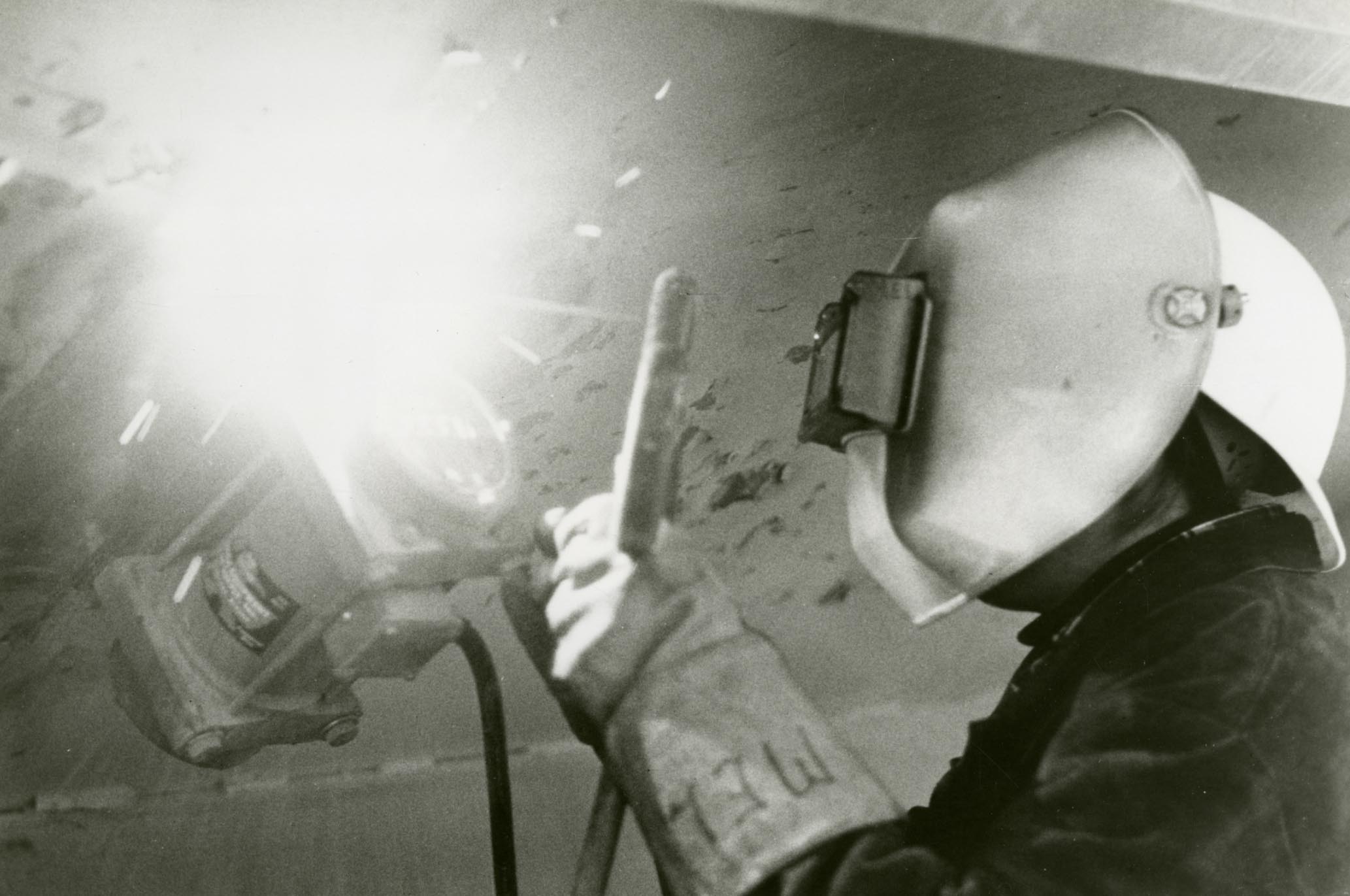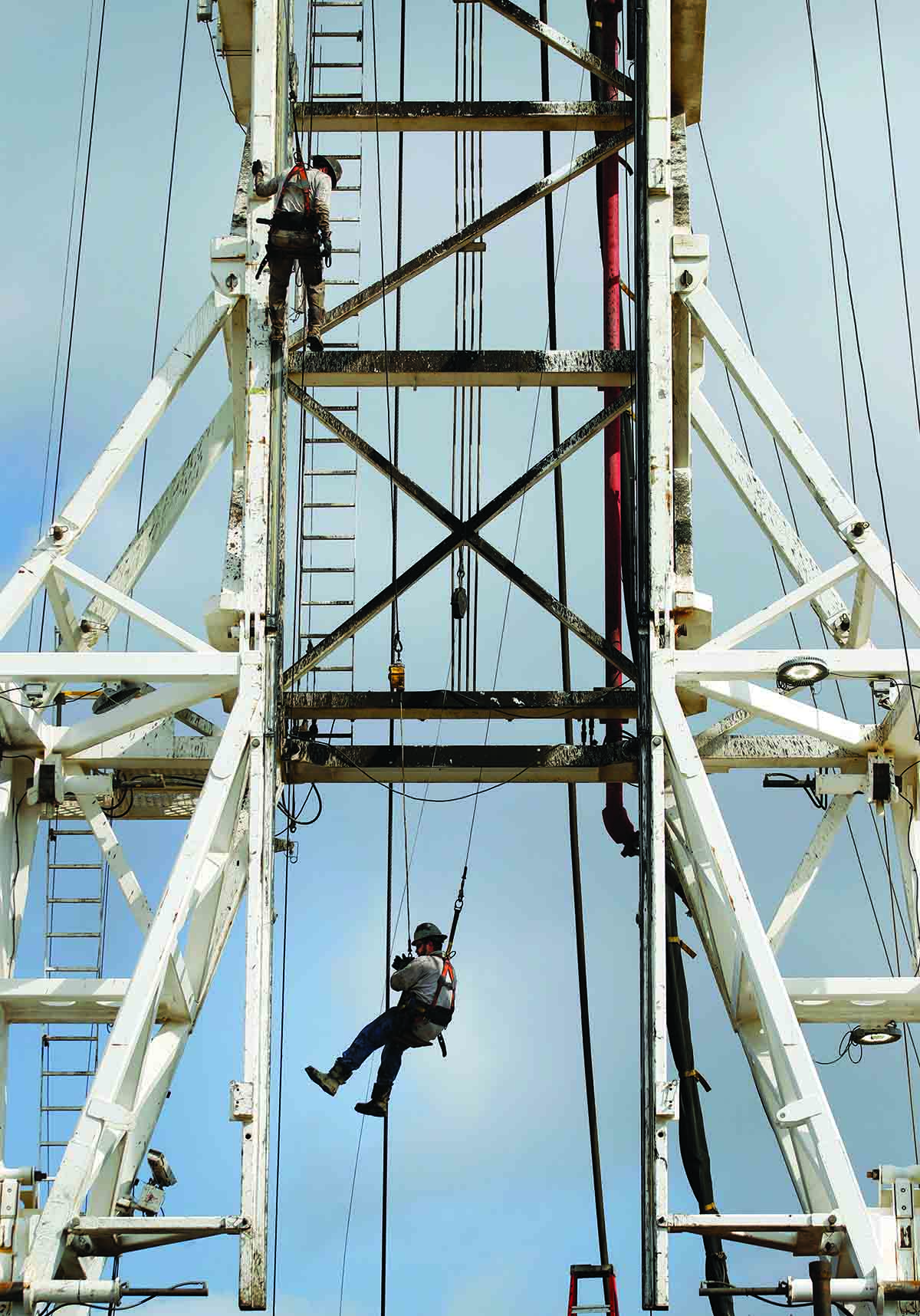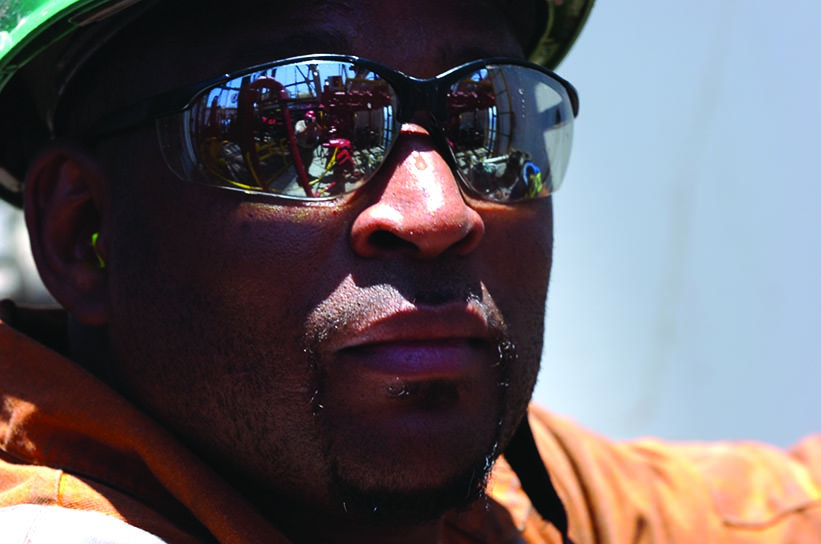Laboring in the U.S. oil and gas industry is undoubtedly a safer proposition today than it would have been 50 years ago. Technological advances have accelerated, workforce training has evolved and the intensity of public scrutiny has grown to a level likely unimaginable when “Dallas” debuted on CBS in 1978.
Anecdotal evidence and government statistics prove up the assumptions.
Micah Backlund, director of health, safety and environment (HSE) at Helmerich & Payne, is a third-generation oilman.
“Both of my grandfathers worked on rigs, and both of them had the scars to prove it,” he told Hart Energy. “But I’m optimistic that we’ve got folks that will retire today with all of their appendages attached, their backs are not hurting. And even some of the chronic issues that were associated with working in the oil field, we’re working to address those and ultimately eliminate them from the workspace.”
Comprehensive data prior to the 1990s is sparse. But in more recent decades, particularly with the early 2000s shale boom, the federal government has dedicated resources to examining safety in the field of U.S. oil and gas extraction (OGE).
Between 2003 and 2013, the OGE workforce doubled and the rig count increased 70%, but the fatality rate for those workers declined more than 36%, according the U.S. Centers for Disease Control and Prevention (CDC).
“The implementation of safety measures focused on land transportation safety, the increased use of automated drilling technologies, and increased collaboration between industry, government and academic institutions may have contributed to the reduced worker fatality rates,” Ryan Hill, director of the National Institute for Occupational Safety and Health’s (NIOSH) Western States Division, told Hart Energy. “Nonetheless, the fatality rate for oil and gas extraction was nearly seven times higher than among all U.S. workers.”
The work at NIOSH has created a close collaboration between government researchers and on-site workers, Hill said.
“What we have found is that oil and gas extraction workers take great pride in their work; they work very hard (often in difficult conditions) and they work as safely as possible,” he said. “Our goal is to make sure that all workers go home safely at the end of every day.”
To be sure, government regulations have played a role in improved safety culture.
General occupational injuries and fatalities in the U.S. increased 20% during the 1960s, prompting passage of the Occupational Safety and Health Act (OSH Act) in 1970. The act established the Occupational Safety and Health Administration (OSHA).
The 53-year-old law “really solidified requirements for employers to provide a safe workplace and provided some strong guidelines on what those expectations were,” Backlund said.
“Now, we would view those as the minimum expectations for a safe workplace. They are regulatory required and driven, but most employers in the oil and gas industry are focused on how they can better perform in an HSE effort and go beyond what is compliance driven and really focus on the prevention of injuries to the workers themselves for the more humanitarian benefits than the regulatory benefits.”

Good for business
“I think there’s been a paradigm shift in the fact that 50 years ago there was a perception that safety was a burden and there was a cost associated with safety,” Backlund said. “The cost part is definitely true. But over the past 50 years, there’s been a recognition that preventing injuries is good business. By preventing those, especially serious injuries, fatalities, catastrophic events, it is good business from a cost standpoint and the humanitarian standpoint.”
In recent years, businesses have found that collaboration is also important, Backlund said. During the decades that followed implementation of the OSH Act, companies learned that a good HSE performance provided a competitive advantage. That created some early reluctance to “share the secret sauce” behind the systems, processes and cultures that resulted in solid HSE performance.
That’s no longer the case, Backlund said.
“Over the past 20 years, we’ve seen kind of another revolution in that we’re all trying to protect the same people. The people that work on the rigs are the same people that work on the frac spreads and the same people that work at a tank gauges,” he said. “It’s the same labor pool. And ultimately, we all have to work together to try to keep each other’s workers safe because at some point in time, it’s likely that the individual will work for one of us.”
James E. Smith, a principal focused on environmental and safety issues at the law firm of Crain Caton & James in Houston, said that companies have come to recognize that excellence must apply throughout the business model.
“More organizations realize that excellence cannot be kept in one part of a business,” he told Hart Energy. “Companies that make excellent returns to their investors tend to have a culture of excellence regarding safety matters. Conversely, companies with poor safety records tend to be underperformers.”
In more recent years, federal initiatives have tracked safety concerns in the field. NIOSH created the Fatalities in Oil and Gas Extraction (FOG) database, a system composed of worker fatality reporting specific to the oil and gas extraction industry. Data collection ended in 2019 when grant funding ended, according to the CDC, the agency that oversaw the effort.
Nevertheless, continued surveillance of OGE worker fatalities is recommended by the agency “to help identify new safety and health hazards and guide research and prevention activities,” according to an agency report released in September 2023.
“Industry, academic institutions, and government can use findings from the FOG database to identify factors contributing to fatal injuries in OGE and develop interventions to improve worker safety and health,” the report said.

Federal fixes
“NIOSH research [has] played a vital role in making the industry safer by bringing to light several exposures related to work in oil and gas extraction,” Hill said.
Among the agency’s key efforts to make oil and gas work safer:
- Occupational Exposures to Crystalline Silica During Hydraulic Fracturing: NIOSH researchers in 2013 identified the seven sources of silica dust exposures and made recommendations to eliminate or reduce them. Companies performing this work and the industry responded by implementing a wide range of engineering and administrative controls (training and policies and procedures) and personal protective equipment to help limit exposures to certain crystalline silica.
- Sudden Death Resulting from Oxygen Deficiency, Inhalation of Hydrocarbon Gases and Vapors: NIOSH research raised awareness about the risk to workers performing manual tank gauging. Opening “thief” hatches of storage tanks can lead to the rapid release of high concentrations of hydrocarbon gases and vapors, resulting in very low oxygen levels with toxic, flammable conditions around and over the hatch, NIOSH research found. The work can be performed safely with proper precautions.
Vehicle crashes have long been a top cause of fatalities in the oil field. Since 1992, the earliest recording of OGE fatality data collection available from the Bureau of Labor Statistics, travel has been the most dangerous activity for these workers.
A NIOSH snapshot of 2018 showed that 40% of work-related OGE fatalities were the result of motor vehicle crashes. Driver fatigue—which may be a result of insufficient sleep, long distances traveled to well sites and long work shifts—is a factor in some of these crashes, Hill said.
Industry, the federal and local governments, and local leaders in the communities where OGE takes place have made several efforts to address the hazards. Hill noted that the Permian Road Safety Coalition is leading a collaboration between industry, local government and the community to prevent crashes and injuries.
Culture shift
Most companies have improved their safety culture during the last decade, Hill said. Among the new protocols, many companies conduct journey management to evaluate the need for vehicle travel and use a voluntary in-vehicle monitoring systems to track their fleets and use the data to coach their employees on improved driving behaviors.
In some instances, it’s as simple as using a seat belt, Backlund said.
“If you think about how oil and gas workers perform their work, the work is in remote locations frequently miles, hundreds of miles from either the office or their home, and the only way to get there currently is through motor vehicles,” he said. “So, as long as we’re going to have people on the highway driving hundreds of miles a day to perform their work, it’s going to be a risk.”

In addition to collaboration among governmental entities, trade groups, companies and the communities in which they operate, individual workers are also working together to keep people in the field safe.
“Oilfield workers are sharing information through social media about accidents and increasing awareness,” Backlund said. “It is pretty interesting to see them using technology— independent of the companies they’ve worked for—to share, ‘Hey, this accident just occurred here. Be aware of it.’”
But there is still work to be done, and the industry is preparing for the future, Backlund said.
“Increased mechanization and automation is next,” he said. “The job profile will be different in the next 20 years than it was today. And just as it’s different today as it was 100 years ago or 50 years ago, we continue to evolve and use new technology that [results] in improved safety performance by controlling and removing exposures that have impacted the lives and families of oil and gas workers.”
Recommended Reading
Not Sweating DeepSeek: Exxon, Chevron Plow Ahead on Data Center Power
2025-02-02 - The launch of the energy-efficient DeepSeek chatbot roiled tech and power markets in late January. But supermajors Exxon Mobil and Chevron continue to field intense demand for data-center power supply, driven by AI technology customers.
Phillips 66’s NGL Focus, Midstream Acquisitions Pay Off in 2024
2025-02-04 - Phillips 66 reported record volumes for 2024 as it advances a wellhead-to-market strategy within its midstream business.
Plains All American Prices First M&A Bond of Year
2025-01-13 - U.S. integrated midstream infrastructure company Plains All American Pipeline on Jan. 13 priced a $1 billion investment-grade bond offering, the year's first to finance an acquisition.
EnLink Investors Vote in Favor of ONEOK Buyout
2025-01-30 - Holders of EnLink units voted in favor of ONEOK’s $4.3 billion acquisition of the stock, ONEOK announced Jan. 30.
Buying Time: Continuation Funds Easing Private Equity Exits
2025-01-31 - An emerging option to extend portfolio company deadlines is gaining momentum, eclipsing go-public strategies or M&A.
Comments
Add new comment
This conversation is moderated according to Hart Energy community rules. Please read the rules before joining the discussion. If you’re experiencing any technical problems, please contact our customer care team.




